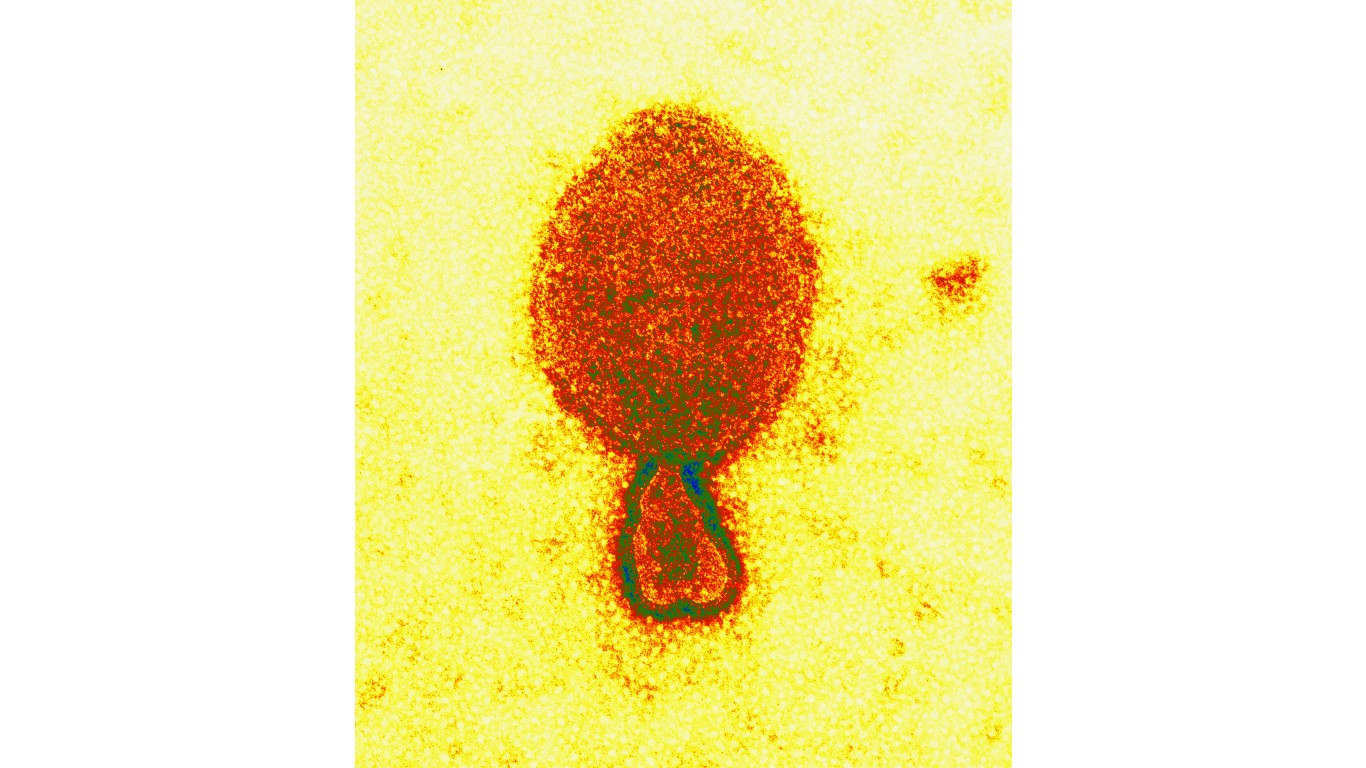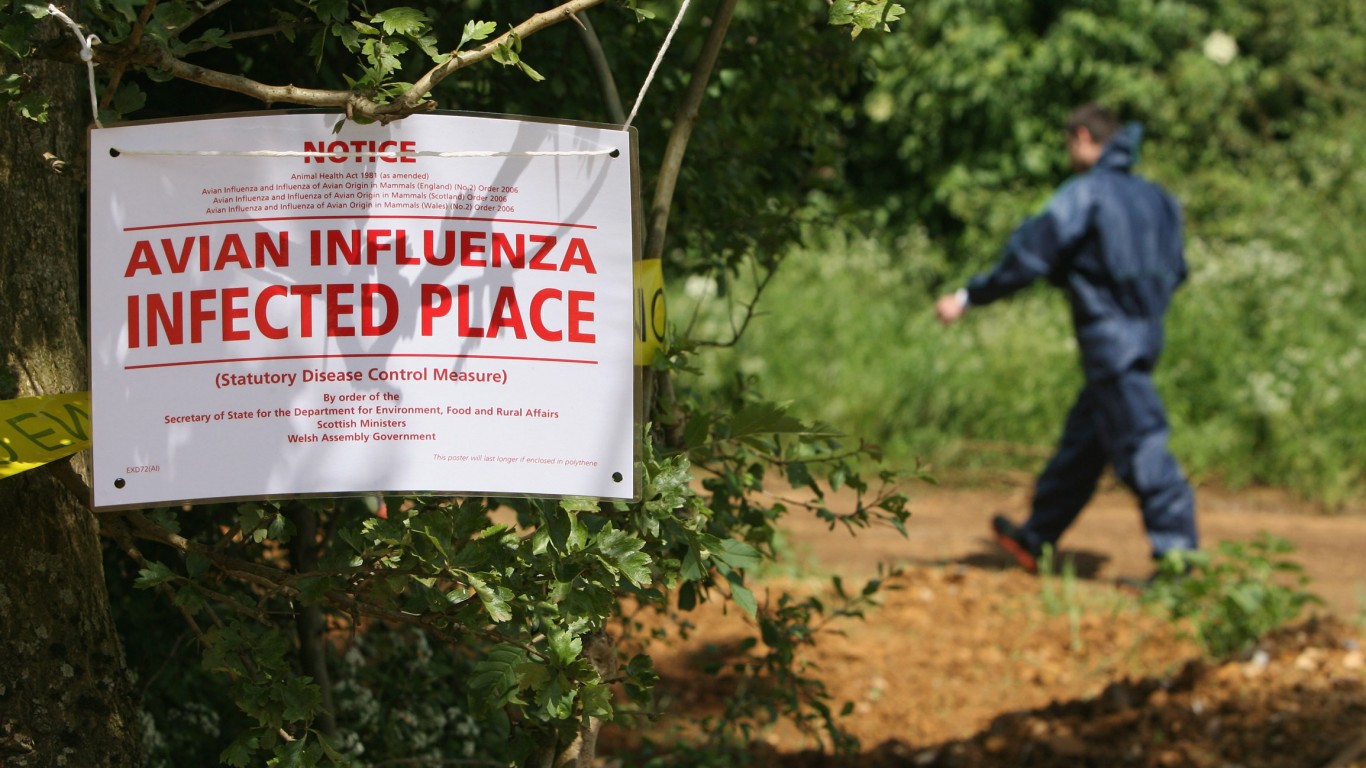
Humans have been fighting disease since long before our genus evolved into Homo sapiens. The most recent example is COVID-19. Though the latest variant of the virus that causes the disease is very contagious, its fatality rate is relatively low in comparison with pathogens. (Here’s how COVID fatalities compare with those of other diseases.)
Antibiotics, vaccines, and antiviral drugs have been effective in preventing infections from spreading widely. Smallpox, for example, has been eradicated. However, as humans and our immune systems evolve, so do deadly pathogens. Some, such as Ebola, have jumped from animals to humans in recent decades, causing large outbreaks.
To determine the deadliest pathogens on Earth, 24/7 Tempo ranked viruses, bacteria, amoebas, and other potentially lethal pathogens according to their fatality rates in humans using information from Live Science and CBS News. Diseases with causes that are yet to be determined were not considered.
Click here to see the deadliest pathogens on earth
The mortality rate for any disease varies depending on access to vaccines and medical help. Some of these pathogens on the list – such as MERS or tuberculosis – spread from person to person. Others come from infected substances – even water – or from animals or microscopic organisms. (These are the 20 worst epidemics and pandemics in history.)

22. Tuberculosis
> Mortality rate: 15.0%
> Type of pathogen: Bacteria
[in-text-ad]
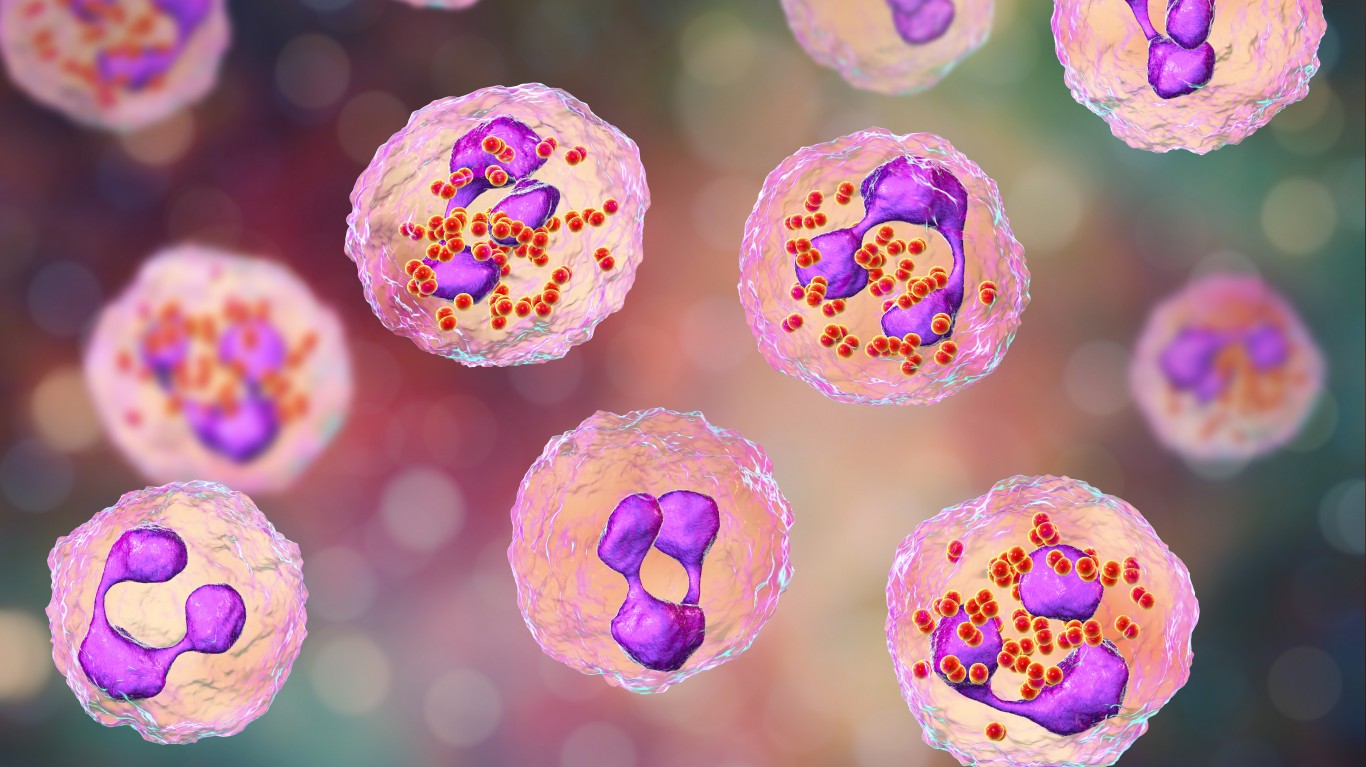
22. Meningococcal meningitis
> Mortality rate: 15.0%
> Type of pathogen: Bacteria
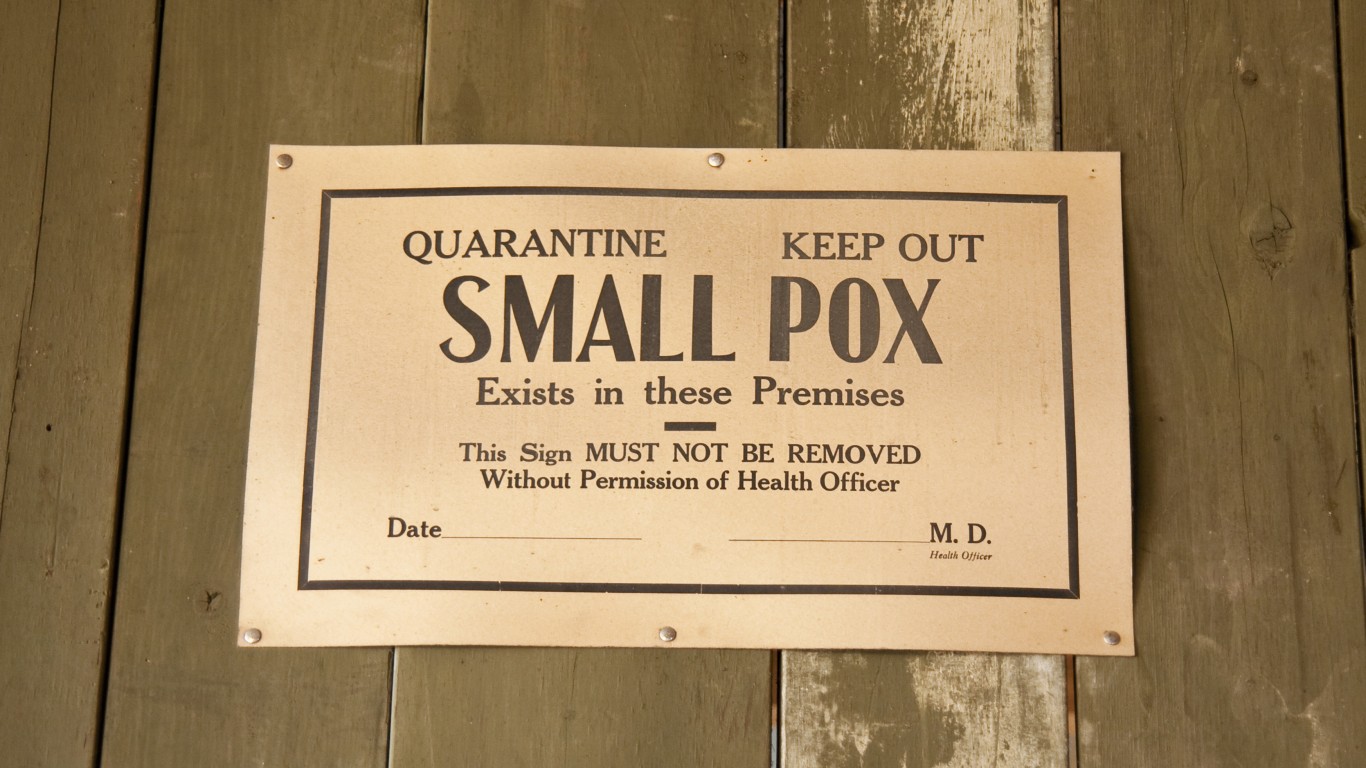
17. Smallpox
> Mortality rate: 30.0%
> Type of pathogen: Virus
17. Crimean-Congo hemorrhagic fever
> Mortality rate: 30.0%
> Type of pathogen: Virus
[in-text-ad-2]

17. Eastern equine encephalitis
> Mortality rate: 30.0%
> Type of pathogen: Virus
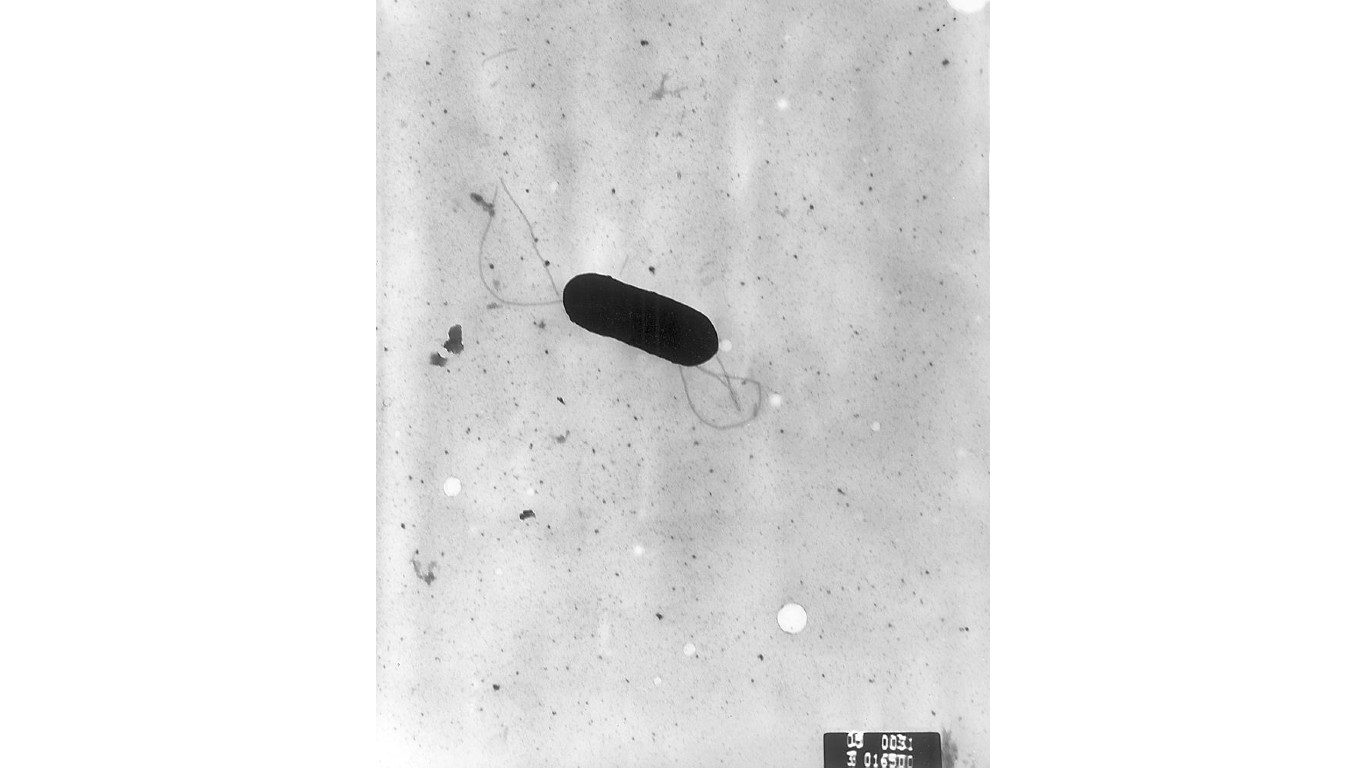
17. Invasive listeria
> Mortality rate: 30.0%
> Type of pathogen: Bacteria
[in-text-ad]

17. Staphylococcus aureus
> Mortality rate: 30.0%
> Type of pathogen: Bacteria
16. Invasive aspergillosis
> Mortality rate: 30.2%
> Type of pathogen: Fungus

15. Vibrio illness
> Mortality rate: 34.2%
> Type of pathogen: Bacteria
[in-text-ad-2]

14. MERS (Middle East Respiratory Syndrome)
> Mortality rate: 34.4%
> Type of pathogen: Virus
13. Hantavirus
> Mortality rate: 36.0%
> Type of pathogen: Virus
[in-text-ad]
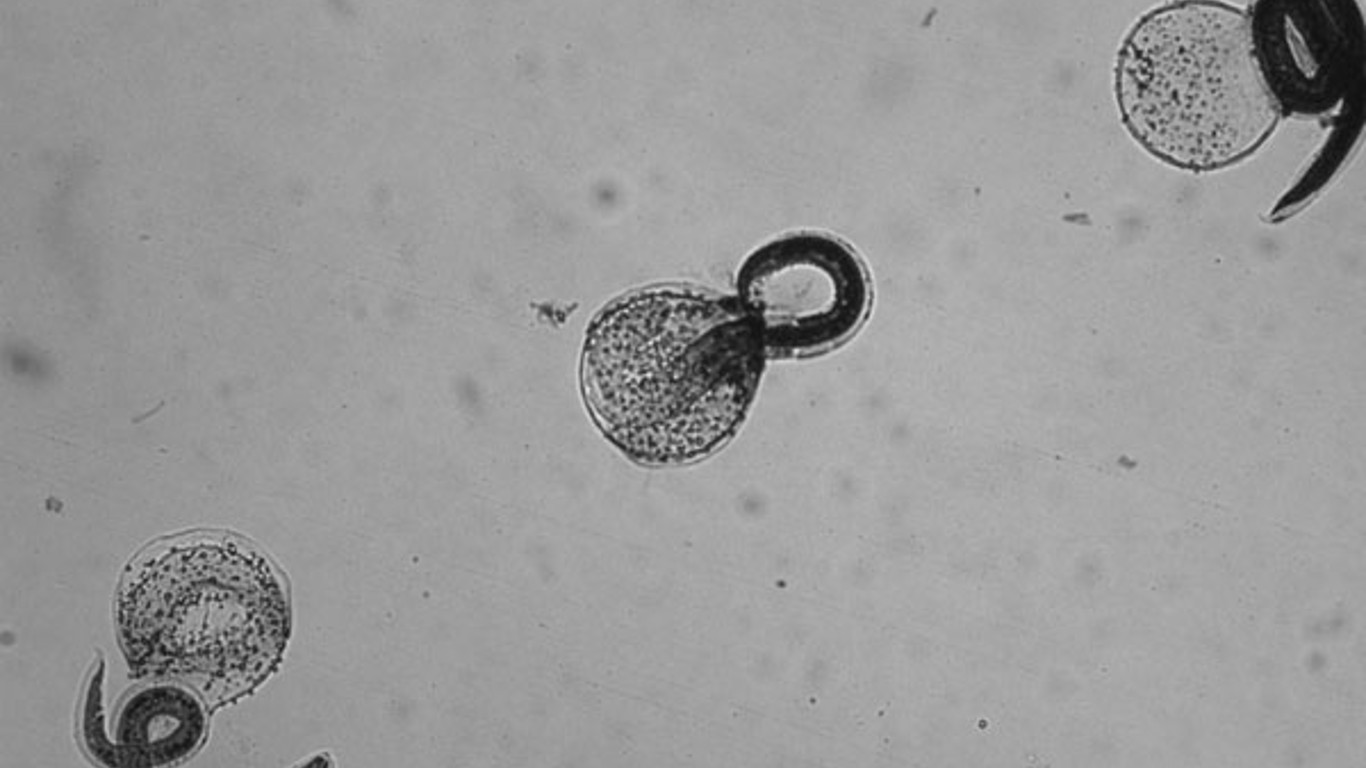
12. Baylisascariasis
> Mortality rate: 38.5%
> Type of pathogen: Parasite

11. Glanders
> Mortality rate: 40.0%
> Type of pathogen: Bacteria
10. Monkey B Virus
> Mortality rate: 42.0%
> Type of pathogen: Virus
[in-text-ad-2]
9. African trypanosomiasis
> Mortality rate: 42.5%
> Type of pathogen: Parasite
7. Marburg virus
> Mortality rate: 50.0%
> Type of pathogen: Virus
[in-text-ad]
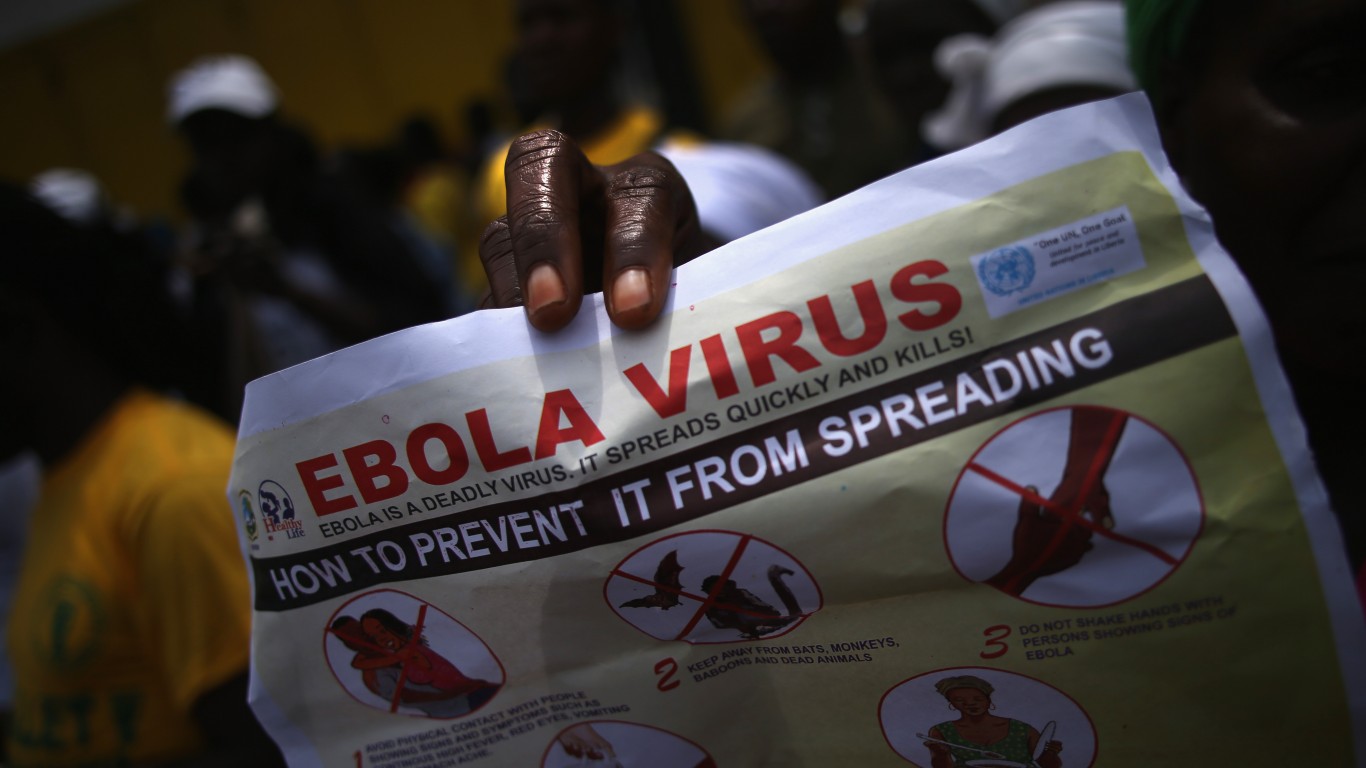
7. Ebola virus
> Mortality rate: 50.0%
> Type of pathogen: Virus
6. Hendra virus
> Mortality rate: 57.0%
> Type of pathogen: Virus

5. Bird flu
> Mortality rate: 60.0%
> Type of pathogen: Virus
[in-text-ad-2]
4. Nipah virus
> Mortality rate: 75.0%
> Type of pathogen: Virus
3. Naegleria fowleri (brain-eating amoeba)
> Mortality rate: 95.0%
> Type of pathogen: Amoeba
[in-text-ad]
2. Balamuthia encephalitis
> Mortality rate: 98.0%
> Type of pathogen: Amoeba

1. Rabies
> Mortality rate: 99.9%
> Type of pathogen: Virus
Take Charge of Your Retirement In Just A Few Minutes (Sponsor)
Retirement planning doesn’t have to feel overwhelming. The key is finding expert guidance—and SmartAsset’s simple quiz makes it easier than ever for you to connect with a vetted financial advisor.
Here’s how it works:
- Answer a Few Simple Questions. Tell us a bit about your goals and preferences—it only takes a few minutes!
- Get Matched with Vetted Advisors Our smart tool matches you with up to three pre-screened, vetted advisors who serve your area and are held to a fiduciary standard to act in your best interests. Click here to begin
- Choose Your Fit Review their profiles, schedule an introductory call (or meet in person), and select the advisor who feel is right for you.
Why wait? Start building the retirement you’ve always dreamed of. Click here to get started today!
Thank you for reading! Have some feedback for us?
Contact the 24/7 Wall St. editorial team.
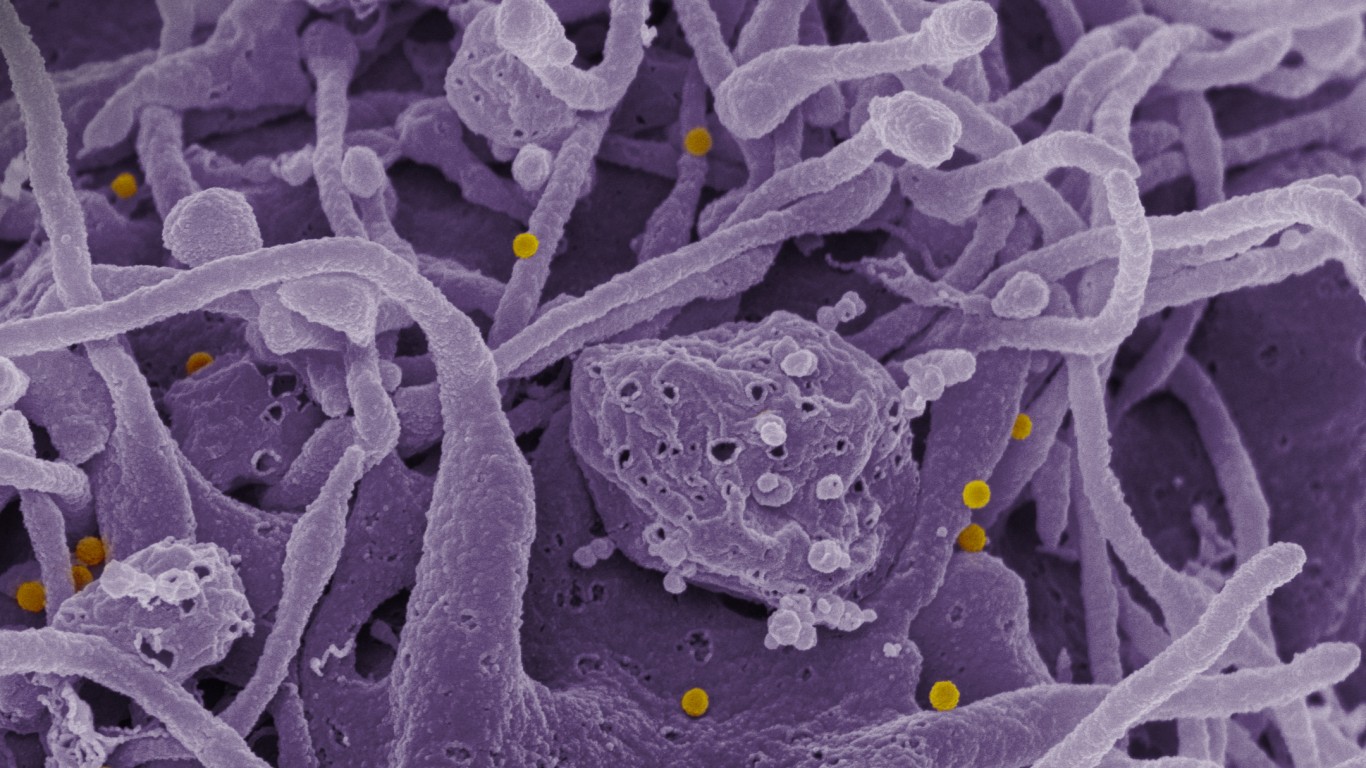
 24/7 Wall St.
24/7 Wall St.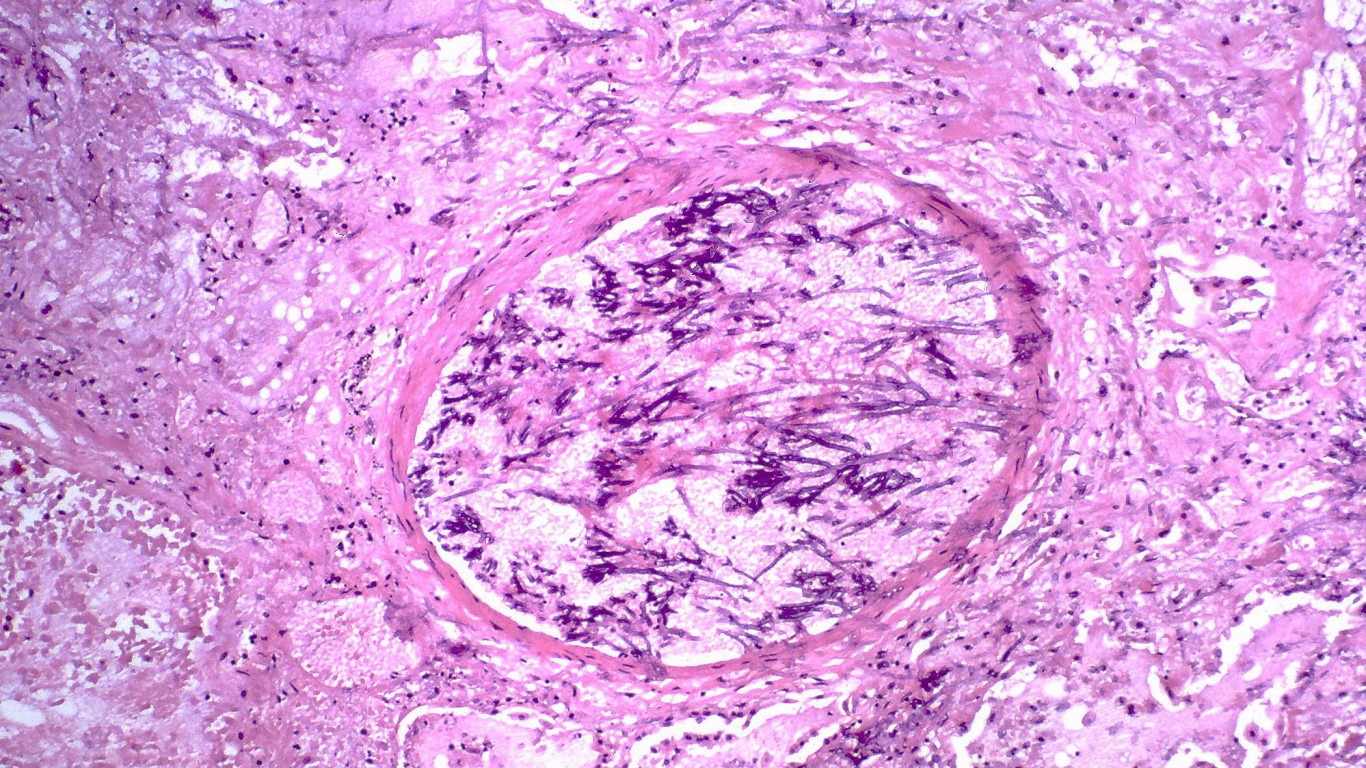


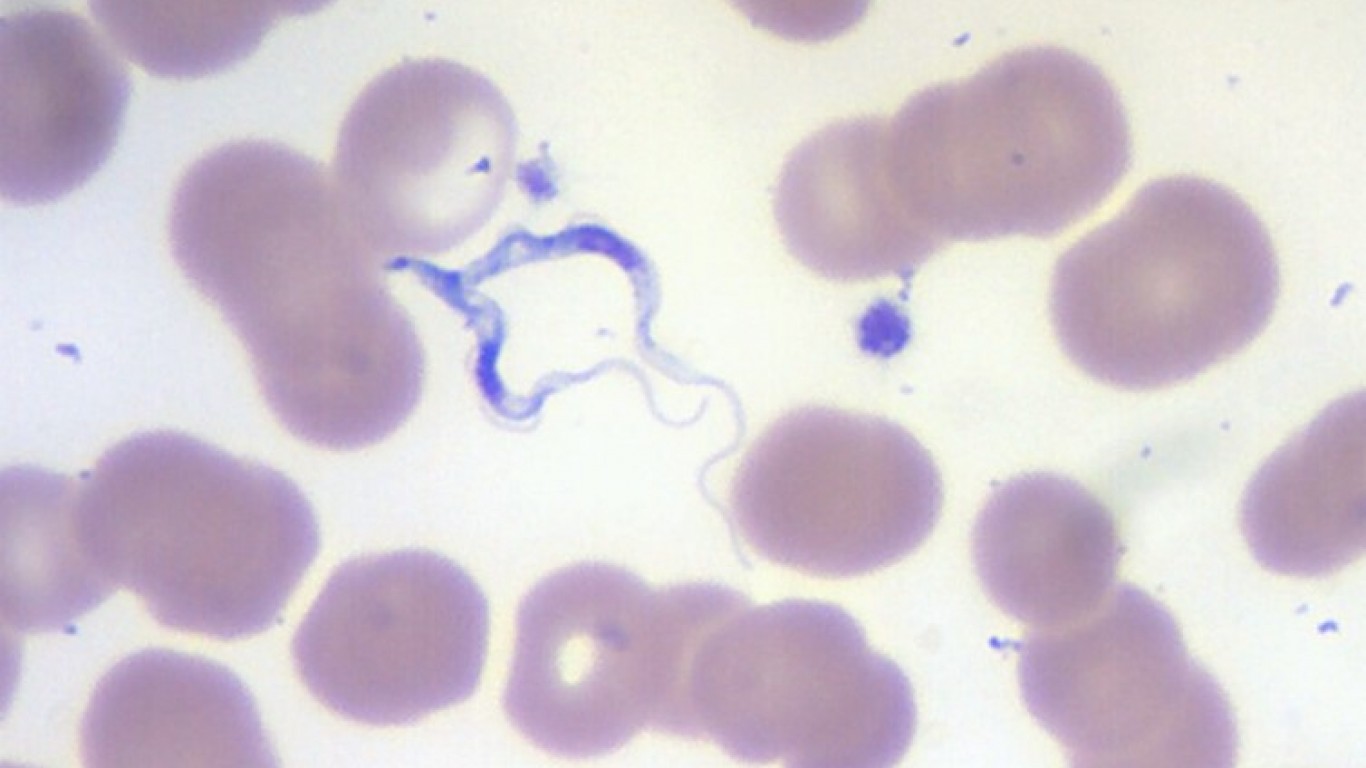
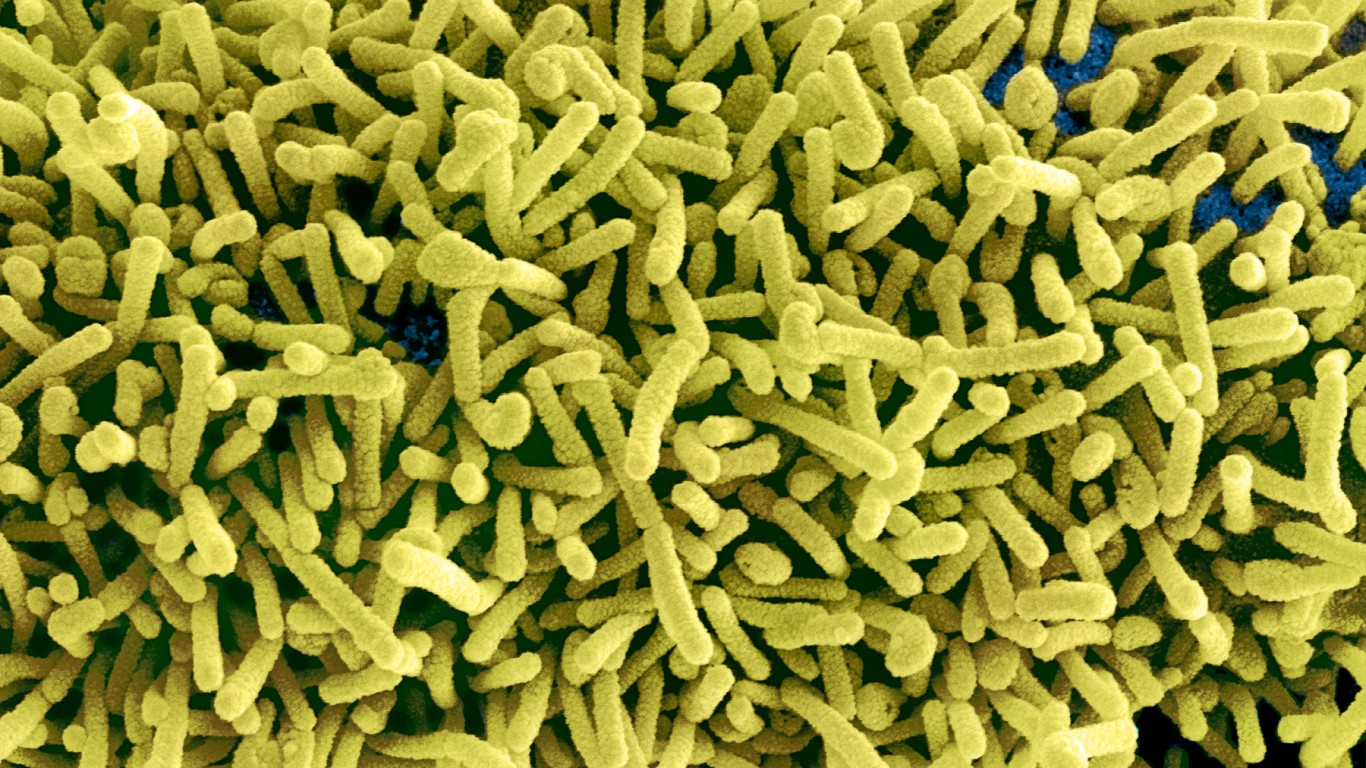
 24/7 Wall St.
24/7 Wall St.